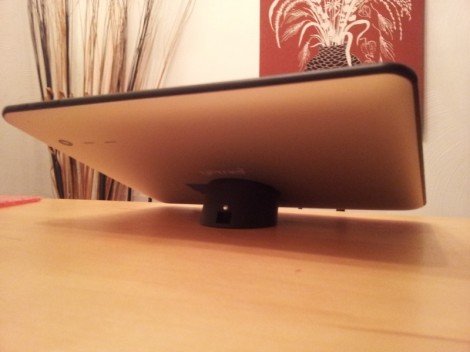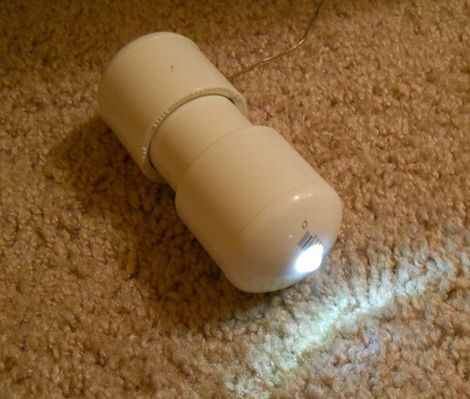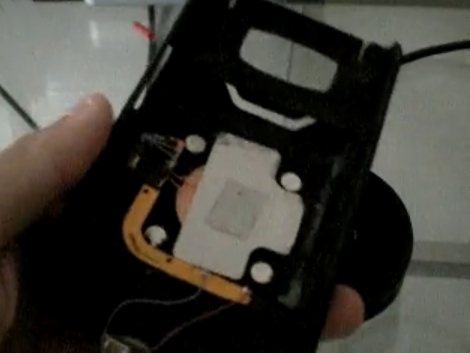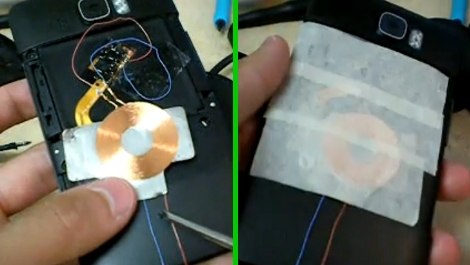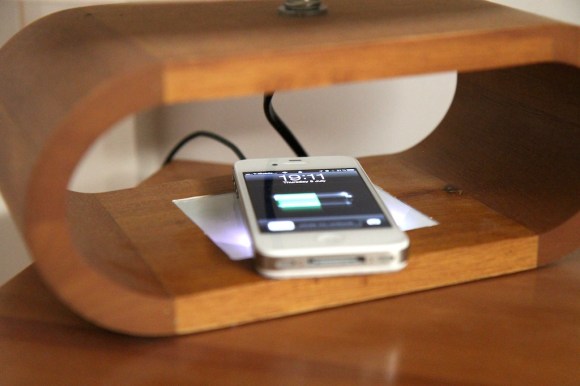
This iPhone 4s is charging without a dock connector because [Tanv28] added inductive charging hardware inside the case.
The hack is not for the faint of heart. But if you’ve got a precision soldering iron and a stead hand we bet you can pull it off. It starts with disassembly to get at the cable that connects the circuit board to the dock connector. [Tanv28] solders fine enameled wire to pins 16, 23, 25, and 27. The other end of these wires are soldered to the guts from a Powermat inductive charging system. After the connections are made there’s not enough room under the back cover of the phone for this added bulk. But laminating a second plastic frame onto the assembly will correct for the 1mm difference in thickness. The clip after the break walks through the entire process.
You can see that [Tanv28] also built the charging station into a piece of furniture. We just saw a post last week that used this technique to add Powermat hardware to a shelf.
Continue reading “Inductive Charger Inside The Case Of This IPhone 4s”

